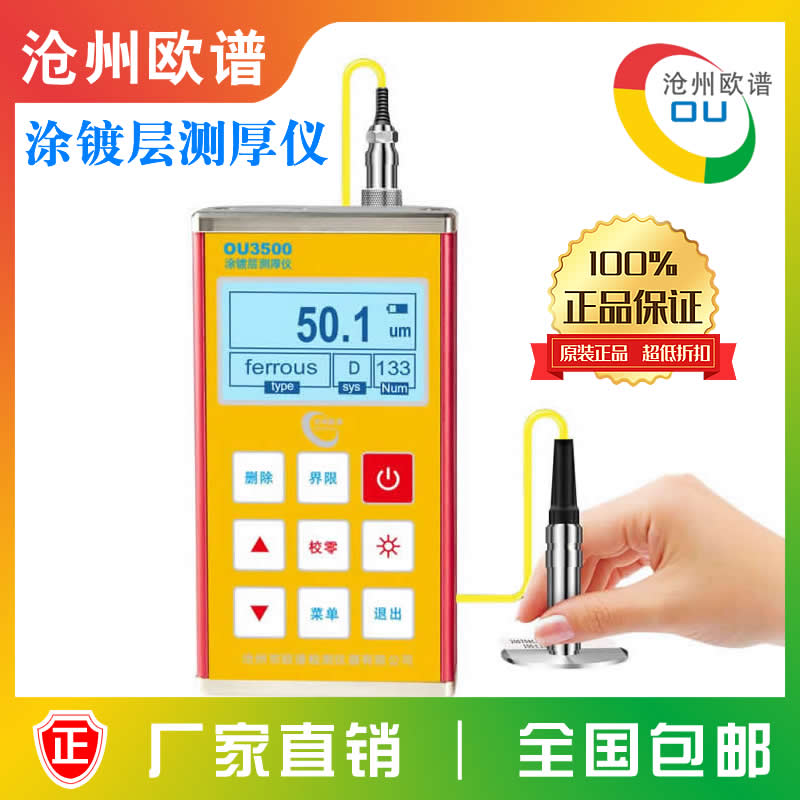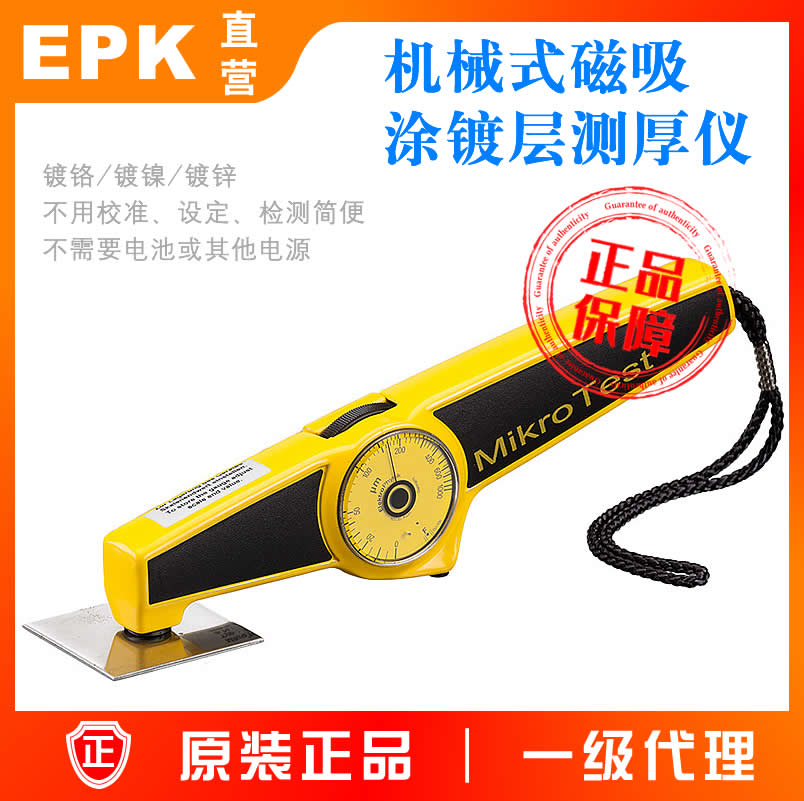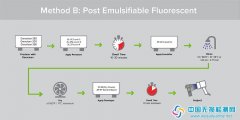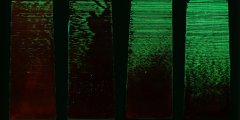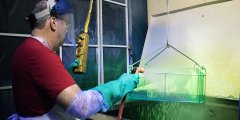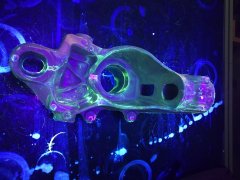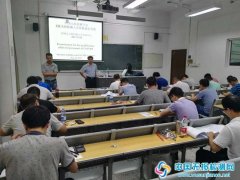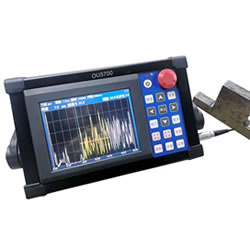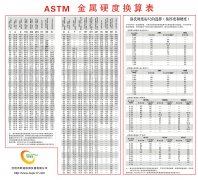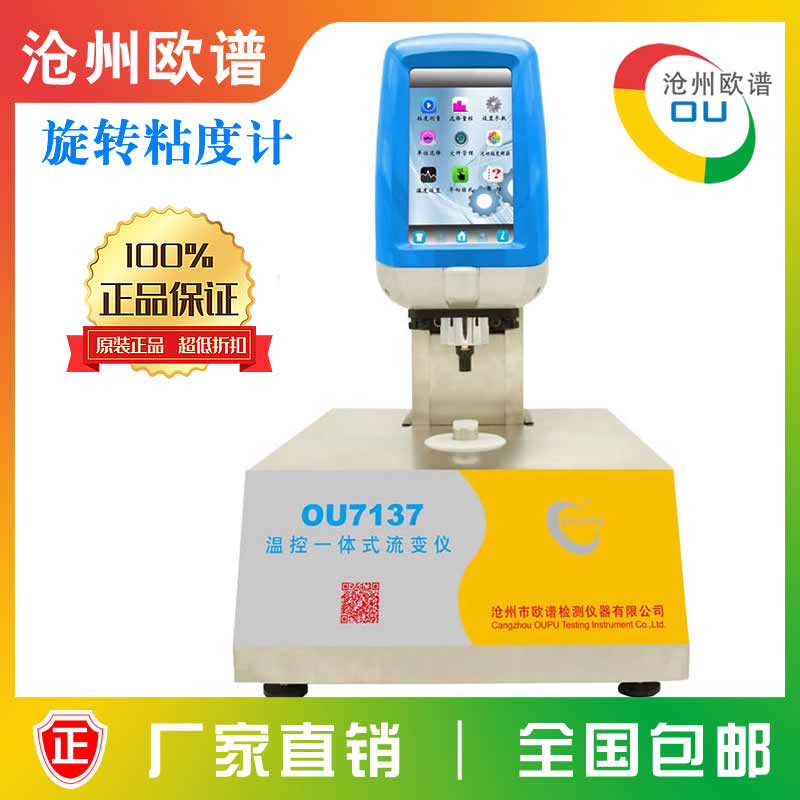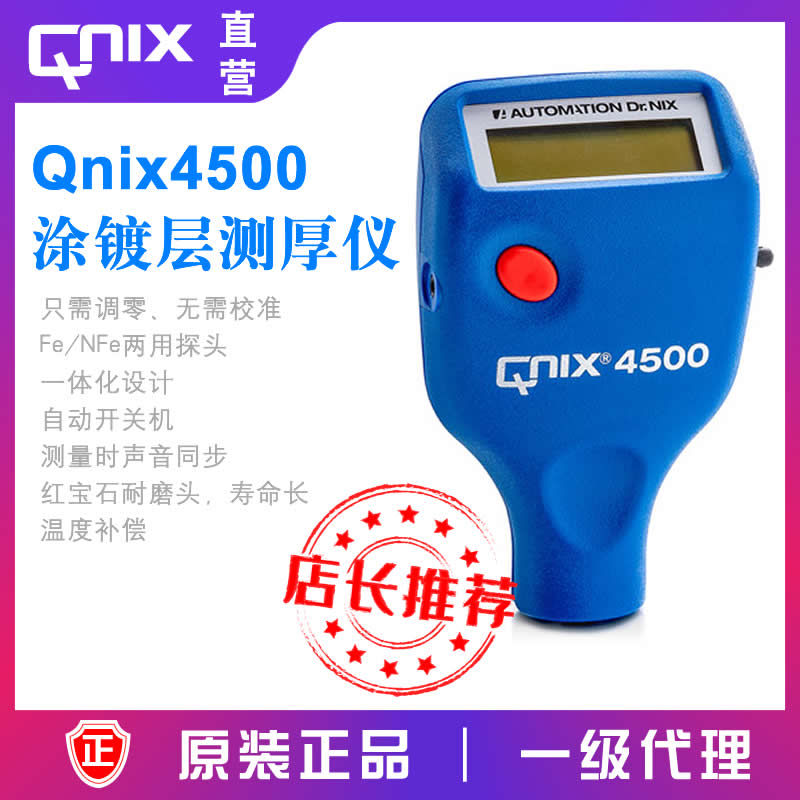|
摘要
本文介绍无污染源新型渗透剂研究中得出新的论点和有关情况:
关键词
渗透剂机理
序言
本文分析了着色渗透剂呈有明显污染源而影响了环境的危害性,因此必须增强环境保护,必须实现新型发展,采用“绿色作业”保护环境。
首先,研制无污染源渗透剂,既不存在污染源,又保护环境安全,对人体无害,同时对渗透探伤速度和灵敏度的各种因素有着重大影响。新型渗透剂是一种可在一分钟内就能渗透、显示的探伤剂;涂在检测工件表面渗透液即为收缩,并且渗透到缺陷中的液体能向外渗出,渗得越多说明深度越深的特性,并可从宽度、深度缺陷的标尺中找出数据,构成了在高温(250℃)、低温(-25℃)、毛面、光面、多孔性及核工业等方面均可使用的产品,最高检测灵敏度可达0.5μ以上。
研究机理-----开拓新的论述:
(一)比重与渗透速度的关系:
比重是单位体积物质的重量,与重力加速度有关的物理量,而密度是单位体积物质的质量,虽是与重力加速度无关的物理量,但由于物质的重量数和质量数近似相等,因而通常把比重与密度近似地认为相等。(单位:克或公斤)利用这一原理,在溶液内加大比重,增加重量,产生压强,迫使渗透液在重力加速作用下加快渗透速度,形成为:比重大、压力大、速度快、时间短;反之,则比重小、压力小、速度慢、时间长。
T:时间 V:速度 W:比重
由此可知;从加大渗透液的比重,增大溶剂的密度,缩小溶剂的体积对提高渗透速度、缩短渗透时间是起到显著效果的。
如:润湿、粘度不变、温度不变、比重增大与渗透时间的关系:
见表所如,适当增加比重,对缩短渗透时间是有显著效果的。则: 比重在 1.154~~1.2左右为最佳值。
(二) 润湿与渗透率关系:润湿与渗透是密切相关的,因此在研制溶液中,必须 重点考虑润湿度。润湿度决定于润湿角与界面张力的关系:这种关系如图所示:
由图推导出它们之间的关系:
rs>rl. Cos+r sl时,润湿变大;
rs>rl. Cos+r sl时,润湿变小;
rs=rl. Cos+r sl时,水滴静止,此时的角度即润湿角。
可由上面的第三式演变为下式:
Cos =(rs-r sl)/ rl
用上式可以讨论当水珠中溶有表面活性剂时会发生什么变化,式中rs由固体种类来决定,是一个常数,rl和rsl各为水的表面张力和水与固体的界面张力,自然,它们都很小,这样,式中右边的数值就要大,无损检测资源网为了保持等式,必然变小,也说明加有表面活性剂能降低表面张力作用,使润湿角变小,增加润湿或渗透作用。则润湿好、内阻小、渗透速度快、灵敏度高;反之就差。但是,直接测定润湿角是有困难的,用测定渗透速度的方法来决定渗透率的效果。
粘度与渗透的关系:
粘度是流体内部阻碍其相对流动的几种特性,因而当相邻两层平行流动着的流体,当其流动速度不相等时,两层流体间会产生摩擦力,则在渗透溶剂中产生的粘度大、小就直接影响到渗透率,因而必须注意到粘性,粘度过大会产生较大的内摩擦力,阻碍渗透速度,但也不能没有一定的粘度,没有粘度就无附着力,则就难渗透,所以对渗透溶液内必须呈有一定的粘度才能达到好的渗透效果。当然粘度是随着温度而变化的,当温度升高时,液体的粘度减少,而气体则增加,为此随着流体的性质不同而决定粘性,才能达到理想的渗透效果。
(四)采用光的折射率来改进检测方法:
折射率,表示在两种介质中光速比值的物理量。当光线从空气穿入紧密的介质(固体、水或任何液体)时即改变光的进行方向。光线入射角的正弦与折射角的正弦比,或光线通过真空时与通过介质时的速度比,则就是折射角。
折射率随着介质的比重、光线的波长温度而变化。介质的折射率一般大于1,可见光折射通常随着波长的减少而增大,即红光最小,紫光最大。用无污染源新型渗透剂即可检测。既不存在污染源又保护环境安全,对人体无害。
(五)在溶剂的配比中突破了溶解理论:
采用分子结构相似相容的机理,配比成既发挥各自特性,又可相互结合的溶剂。形成为采用光的折射率特性来改变检测方法,不用显像液体。由于溶剂内各有特殊的特性存在,既有相互结合的复杂的化合物和混合物,又可相互约束;它们从物质的结构和性能出发,研究物质发生化学反应的可能性来控制化学反应的方式,因而达到理想的效果。因此选择时既要有良好的基本相,又要有直接或间接相溶相,聚合时相互作用成为一体。因此对各种不同的检测案件要求均可使用,而且能用于磁粉探伤中作伪真、伪缺陷的磁痕验证之用。
(六)分析测试报告:
由中国科学院上海有机化学研究所测试报告,测试氟、氯、硫。分析结果:
F:未检出(检测限<10 μg/g)
CL:17.1 μg/g (0.0017%)
S:未检出 (检测限<10 μg/g)
通过多年来分析了上述六个因素的作用,创新出“采用绿色作业”来保护环境、无污染源、突破性的渗透剂,解决了污染源难题。 (用一种渗透液即可完成清洗、显像)使操作更方便、检测效果更好。
Research Mechanism of Pollution Source-free Novel PenetrantAbstract:
In this paper, new arguments and relevant conditions derived from the research on pollution source-free novel penetrant are introduced:
Keyword: mechanism of penetrant
Introduction
In this paper, hazardness of dye penetrant to environments due to obvious pollution sources was analyzed, so environmental protection must be strengthened, novel development must be realized and “Green Operations” are adopted to protect environment.
First of all, development of pollution source-free penetrant is not only free from pollution source, but also protects environmental safety and is harmless to human body. At the same time, it has great influences on various factors such as penetration flaw detection speed and sensitivity. Novel penetrant is a flaw detection agent which can penetrate and develop within one minute. Penetrating fluids coated on surfaces of detection pieces will shrink immediately and liquids penetrating into flaws can also seep outwards. The more the fluid seeping is, the deeper the flaw depth is, in addition, the data can also be found from the scale of width and depth flaws, so that a product which can be used in the fields such as high temperature (250℃), low temperature (-25℃), coarse surfaces, smooth surfaces, porosity and nuclear power plant, and the maximum detection sensitivity can reach above 0.5μ.
1. Research mechanism ----- Development of new discussions:
(I) The relationship between specific weight and penetration velocity: specific weight is the weight of substance per unit volume, namely a physical quantity relevant to acceleration of gravity, and density is the mass of substance per unit volume, namely a physical quantity irrelevant to acceleration of gravity, however, the weight number and the mass number of substance are approximately equal, so specific weight and density are typically considered to be approximately equal. (unit: gram or kilogram) Based on this principal, specific weight is increased in solution to increase weight, generate pressure and forcibly increase the penetration velocity of the penetrating fluid under the action of acceleration of gravity, so as to form: large specific weight, large pressure, high velocity, and short time; otherwise, small specific weight, small pressure, low velocity and long time.
T:Time V:Velocity W:Weight
It is therefore clear that: increasing the specific weight of penetrating fluid, increasing the density of solvent and reducing the volume of solvent have significant effect on raising penetrating velocity and shortening penetrating time.
For example: the relationship between increased specific weight and penetrating time under unchanged wetting, viscosity and temperature
Specific Weight (Gram)
Penetrating Time (Minute)
0.8
10
1.05
5
1.2
1
Time/Minute It is therefore clear from the table that: increasing the specific weight properly has significant effect on shortening the penetrating time. Then:
The best value of specific weight ranges from 1.154 to 1.2.
(II) The relationship between wetting and penetration rate: wetting and penetration are closely related, so the degree of wetness must be taken into key consideration during the development of solvent. The degree of wetness depends on the relationship between wetting angle and interfacial tension: this relationship is shown as the following figure:
The relationship between them can be deduced from the figure:
when rs > rl. Cos+r sl, the wetting increases;
when rs < rl. Cos+r sl, the wetting decreases;
when rs = rl. Cos+r sl, water drops are at a standstill, and the angle at this moment is the wetting angle.
The following formula can be evolved from the third formula above:
Cos = (rs-r sl) / rl
What kind of change will occur when surfactant is dissolved in water drops can be discussed in accordance with the above formula, in the formula, rs, which is a constant, is determined by the type of solid, rl and rsl respectively are surface tension of water and interfacial tension between water and solid and are naturally quite small, in this case, the numerical value at the right part of the formula should be larger, so in order to keep the formula equal, must be decreased, which also indicates that the addition of surfactant can reduce the effect http://www.tucengcehouyi.com of surface tension to reduce the wetting angle and improve the wetting or penetration effect. So the wetting is good, the internal resistance is small, the penetrating velocity is high and the sensitivity is high; otherwise, the above parameters go oppositely. Nonetheless, it is difficult to measure the wetting angle directly, so the effect of penetration rate is determined by using the method for measuring penetration velocity.
(III) The relationship between viscosity and penetration:
Viscosity is several characteristics inside a fluid for hindering the relative flow of the fluid, so when the flowing velocity of two adjacent layers of fluids flowing in parallel is unequal, friction force will be generated between the two layers of fluids, as a result, the viscosity generated in penetrating solvent directly impacts on penetration rate, so the attention must be paid to viscosity, too large viscosity will generate large internal friction force to hinder penetrating velocity, however, no adhesive force will exist without viscosity and in this case, penetration is hardly achieved, so certain viscosity must be maintained, therefore, the penetrating fluid must have certain viscosity to obtain excellent penetrating effect. Certainly, the viscosity varies along with the temperature, when the temperature rises, the viscosity of liquid decreases and the gas increases, as a result, satisfactory penetration effect can be reached only by determining the viscosity based on different fluid properties.
(IV) Modification of the detection method by adopting refractive index of light:
The refractive index is a physical quantity representing the ratio of light speeds in two media. When light penetrates into a close medium (solid, water or any fluids) from air, the proceeding direction of light will be changed. The sine ratio of the sine of the incidence angle of the light to the refraction angle or the velocity ratio of the light passing through vacuum to the light passing through a medium is the refractive index.
The refractive index varies along with specific wweight of the medium as well as wavelength and temperature of the light. The refractive index of the medium is generally larger than 1, which indicates that refraction of visible light generally increases along with the decrease of wavelength, namely, red light has the smallest refraction while violet light has the largest refraction. It can be detected by using pollution source-free penetrant, in which not only no pollution source exists, but also environmental safety is protected and no hazard is http://www.baigedaoceshi.com brought to human body.
(V) Breakthrough of dissolution theory in proportioning of solvents
Solvents capable of not only exerting respective characteristics, but also being combined with each other are proportioned based on the mechanism of similarity and intermiscibility of molecular structure. The detection method is changed by adopting the characteristic of refractive index of light, instead of the use of development liquid. Special characteristics are present in the solvents, complex compounds and mixtures can not only be combined with each other, but also be mutually constrained; on the basis of the structure and performance of substance, the possibility of chemical reaction of substance is researched to control the way of chemical reaction, thereby reaching ideal effect. Thus, not only excellent basic phase but also direct or indirect intermiscibile phase is needed during selection, and they are interacted with each other to be integrated during polymerization. So it can be used under different requirements of detection cases, and can also be used for verifying magnetic traces of false flaws in magnetic particle testing.
(VI) Analysis and test report
The test report was provided by Shanghai Institute of Organic Chemistry, Chinese Academy of Sciences, fluorine, chlorine and sulfur are tested. The analysis result is as below:
F: undetected (detection limit < 10 μg/g)
CL: 17.1μg/g (0.0017%)
S: undetected (detection limit < 10 μg/g)
By years of analysis on the effect of the above six factors, “adoption of green operations” is innovatively created to protect environment. A breaking-through penetrant free from pollution sources was developed to solve the problem of pollution sources.
(Cleaning and development can be finished by one penetrant) so the operation is more convenient and the detection effect is better.
|

 手机版
手机版





